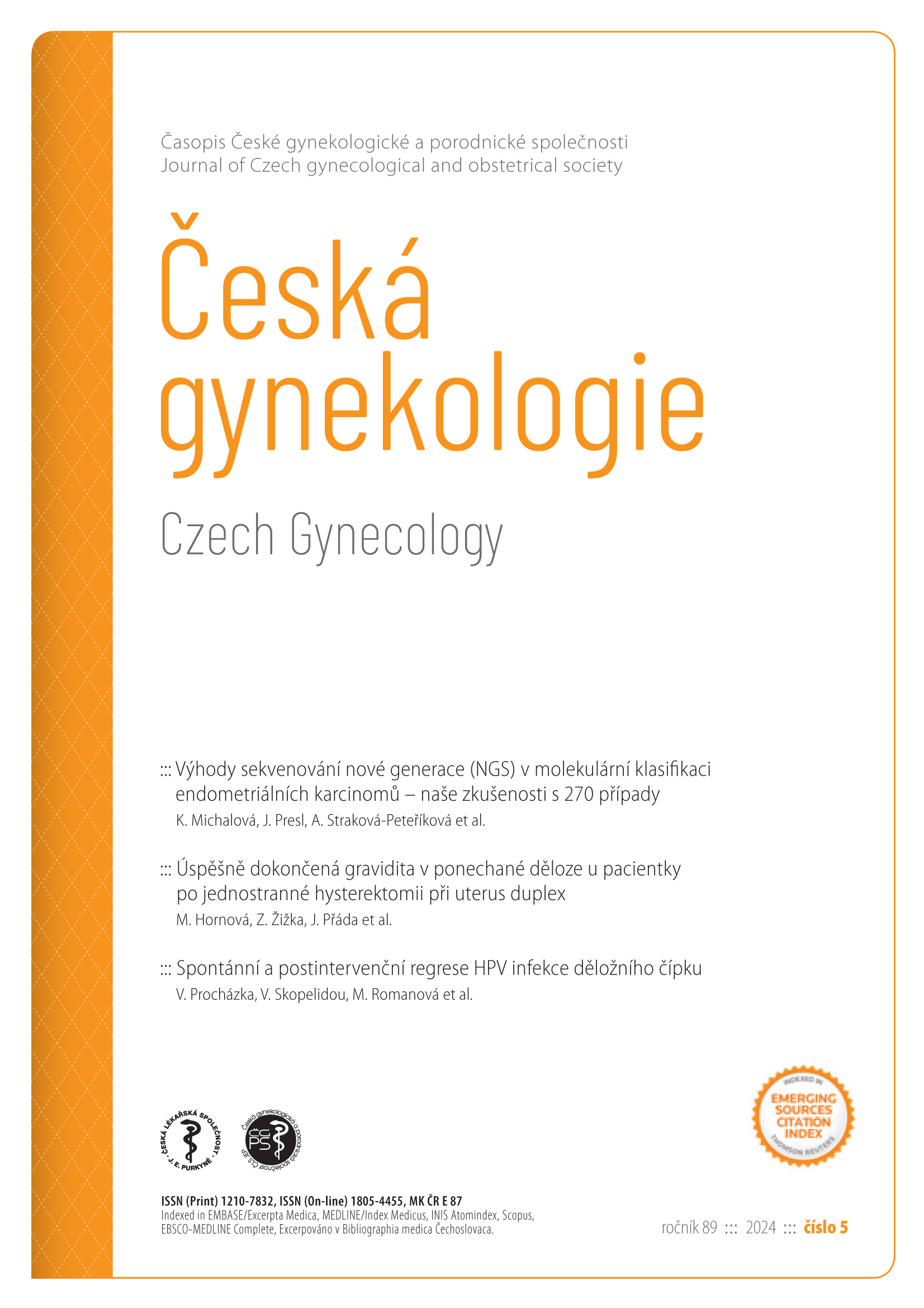Advantages of next-generation sequencing (NGS) in the molecular classifi cation of endometrial carcinomas – our experience with 270 cases
Keywords:
endometrium, endometrial carcinoma, molecular classification, next generation sequencing, NGSAbstract
Summary: Objective: Molecular classification of endometrial carcinomas (EC) divides these neoplasms into four distinct subgroups defined by a molecular background. Given its proven clinical significance, genetic examination is becoming an integral component of the diagnostic procedure. Recommended diagnostic algorithms comprise molecular genetic testing of the POLE gene, whereas the remaining parameters are examined solely by immunohistochemistry. The aim of this study is to share our experiences with the molecular classification of EC, which has been conducted using immunohistochemistry and next-generation sequencing (NGS) at our department. Methods: This study includes all cases of EC diagnosed at Šikl's Department of Pathology and Biopticka Laboratory Ltd. from 2020 to the present. All ECs were prospectively examined by immunohistochemistry (MMR, p53), fol lowed by NGS examination using a customized Gyncore panel (including genes POLE, POLD1, MSH2, MSH6, MLH1, PMS2, TP53, PTEN, ARID1A, PIK3CA, PIK3R1, CTNNB1, KRAS, NRAS, BRCA1, BRCA2, BCOR, ERBB2), based on which the ECs were classified into four molecularly distinct groups [POLE mutated EC (type 1), hypermutated (MMR deficient, type 2), EC with no specific molecular profile (type 3), and TP53 mutated (“copy number high”, type 4)]. Results: The cohort comprised a total of 270 molecularly classified ECs. Eighteen cases (6.6%) were classified as POLE mutated EC, 85 cases (31.5%) as hypermutated EC (MMR deficient), 137 cases (50.7%) as EC of no specific molecular profile, and 30 cases (11.1%) as TP53 mutated EC. Twelve cases (4.4%) were classified as “multiple classifier” endometrial carcinoma. ECs of no specific molecular profile showed multiple genetic alterations, with the most common mutations being PTEN (44% within the group of NSMP), fol lowed by PIK3CA (30%), ARID1A (21%), and KRAS (9%). Conclusion: In comparison with recommended diagnostic algorithms, NGS provides a more reliable classification of EC into particular molecular subgroups. Furthermore, NGS reveals the complex molecular genetic background in individual ECs, which is especially significant within ECs with no specific molecular profile. These data can serve as a springboard for the research of therapeutic programs committed to targeted therapy in this type of tumor.


